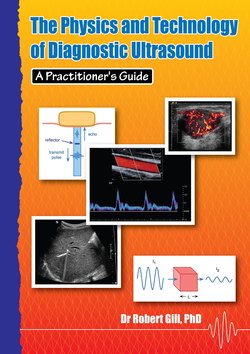Читать книгу The Physics and Technology of Diagnostic Ultrasound: A Practitioner's Guide - Robert Gill - Страница 35
На сайте Литреса книга снята с продажи.
A, B and M mode
ОглавлениеThe technique used to produce the standard ultrasound image is referred to as "B-mode" (Brightness mode) imaging. Note that it produces a two-dimensional image of the patient's anatomy. Two other imaging modes are used in specific clinical areas, both of them one-dimensional.
"M-mode" (Motion mode) is widely use in echocardiography to provide detailed information regarding the movements of the heart walls and valves. To produce an M-mode display, the machine keeps the ultrasound beam in a fixed position and repeatedly transmits and receives along this beam. The display of the echoes is swept slowly from left to right on the screen over a period of several seconds.
Structures that are stationary relative to the probe (e.g. the chest wall) will be displayed at a constant depth and therefore as horizontal lines, while structures that move towards and away from the probe (e.g. the heart walls) will move up and down the screen and so the display will document their position as a function of time, as shown in Figure 3.15.
Figure 3.15 (Left) The beam is directed along the line of sight indicated by the broken line. (Right) The resulting M-mode display shows the depth of the tissue structures along this line of sight as a function of time over a period of several seconds.
The M-mode display thus provides information about the amount of movement of individual structures, the speed at which they move and their acceleration.
It also shows the relative position of structures and how that changes with time (e.g. the maximum and minimum diameters of a heart chamber, or the movement of two valve leaflets as the valve opens and closes). Often an ECG trace is also shown on the screen to provide a timing reference (as shown in Figure 3.16).
Figure 3.16 An M-mode trace showing the movement of the mitral valve leaflets.
The other one-dimensional imaging mode is the A-mode (Amplitude mode) display. Again the beam is kept in a fixed position and the machine transmits and receives along this line of sight. However, the display simply shows echo amplitude as a function of depth, as shown in Figure 3.17.
This type of display was widely used in the early days of diagnostic ultrasound. It is rarely used now, except occasionally in some eye scans. Its attractions are its simplicity and the ability to measure the depth of the various echoes accurately.
Figure 3.17 An A-mode display.
